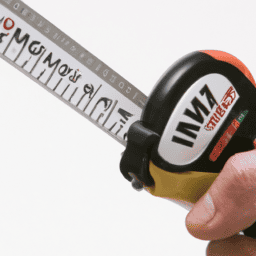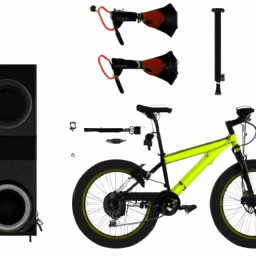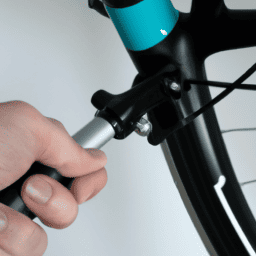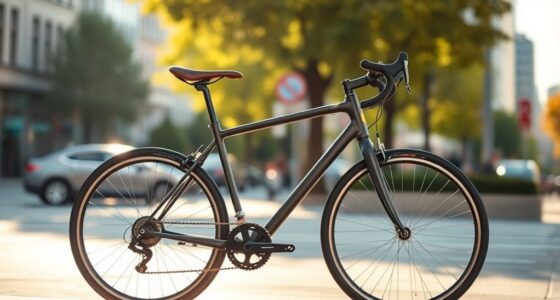In cycling, the appropriate handlebars are crucial for an optimal experience. However, determining the correct size and style of handlebars suitable for you might seem challenging. Fortunately, the process of measuring your bike’s handlebars is straightforward and requires only a handful of instruments.
Before we get started, it’s important to understand the different types of handlebars available. From drop bars to flat bars, each type offers its own unique benefits and drawbacks.
Once you know which type of handlebars you want, the next step is measuring them accurately. In this article, I’ll guide you through the process of measuring your bicycle handlebars, including the width, rise, and reach, so you can choose the right size handlebars for your bike.
Key Takeaways
- Measuring bicycle handlebars is a simple process that requires a tape measure, adjustable wrench, and level.
- Width of handlebars should be measured from center to center, while rise and reach involve determining the center of the stem clamp.
- The bike should be level and the wheels perpendicular to the ground when measuring handlebars to avoid common mistakes.
- Handlebars come in different sizes, shapes, and materials, and selecting the right ones ensures a comfortable and efficient ride.
Understand the Different Types of Handlebars
So, you’re ready to measure your bicycle handlebars, but first, let’s talk about the different types of handlebars you might encounter on your ride.
There are several types of handlebars available on the market, each with its own unique design and features. The most common types are drop bars, flat bars, riser bars, and bullhorns.
Drop bars are designed for road bikes and are characterized by their curved shape. They offer multiple hand positions, which can be beneficial for long-distance rides.
Flat bars, on the other hand, are straight and provide a more upright riding position, making them ideal for commuting and casual riding.
Riser bars are similar to flat bars but with a slight upward curve, providing a more comfortable grip.
Bullhorns are straight bars with forward-facing grips, allowing for a more aerodynamic riding position.
When comparing these types, it’s important to consider the pros and cons of each and choose one that suits your riding style and needs. Additionally, handlebar materials and durability factors should also be taken into account.
Now that you understand the different types of handlebars, it’s time to gather the necessary tools to measure your own.
Gather the Necessary Tools
To get started, you’ll need a tape measure, an adjustable wrench, and a level. These tools are essential for accurately measuring the bicycle handlebars.
Here are some tips to avoid common mistakes and alternative methods to measure the handlebars:
-
Use a tape measure with centimeters and millimeters. This provides a more accurate measurement than using a tape measure with inches only.
-
Make sure the bike is level and the wheels are perpendicular to the ground. This ensures that the handlebars are in the correct position for measuring.
-
Use an adjustable wrench to loosen and adjust the stem. This allows you to adjust the handlebars to the correct position for measuring.
-
Measure from the center of the handlebars, not the outer edge. This provides the most accurate measurement for the width of the handlebars.
It’s important to measure the handlebars correctly to ensure that the new handlebars you purchase are the correct size. In the next section, we’ll discuss how to measure the width of the handlebars.
Measure the Width of the Handlebars
You’ll want to take note of the width of your bike’s steering system to ensure a comfortable and safe riding experience. To measure the width of your handlebars, you’ll need a tape measure or ruler.
Start by removing any grips or accessories on the handlebars. Then, measure the distance from the center of one end of the handlebar to the center of the other end. This will give you the total width of your handlebars.
It’s important to consider the handlebar material and grip compatibility when measuring the width. Different materials may affect the width of the handlebars, and certain grips may require more or less space.
Once you have the measurement, you can determine if the width is suitable for your riding style and body size. Next, consider the rise and reach of the handlebars to further customize your riding experience.
Consider the Rise and Reach of the Handlebars
When choosing your handlebars, it’s important to think about how high or low they will be and how far they will extend towards you. The rise and reach of your handlebars can greatly impact your riding posture and overall comfort on the bike.
Here are some key considerations when measuring the rise and reach of your handlebars:
-
Handlebar materials: The material of your handlebars can affect the weight, rigidity, and overall feel of your bike. Common materials include aluminum, carbon fiber, and steel. Each material has its own unique properties that can affect the rise and reach of your handlebars.
-
Ergonomic design: Many handlebars are designed with ergonomic features to promote comfort and reduce fatigue. Look for handlebars with a comfortable grip shape and adequate padding to ensure a comfortable ride.
-
Impact of handlebar size on riding posture: The size and shape of your handlebars can greatly impact your riding posture. A higher rise can promote an upright riding position, while a lower rise can encourage a more aggressive, aerodynamic posture.
-
Measuring the rise and reach: To measure the rise and reach of your handlebars, first determine the center of the stem clamp. Then, measure the distance from the center of the stem clamp to the center of the grip area for the reach. For the rise, measure the distance from the center of the stem clamp to the top of the handlebar.
Considering the rise and reach of your handlebars is important when choosing the right size handlebars for your bike. The size and shape of your handlebars can greatly impact your riding posture and overall comfort on the bike.
In the next section, we’ll discuss how to choose the right size handlebars for your bike based on your measurements and riding style.
Choose the Right Size Handlebars for Your Bike
Finding the perfect fit for your bike’s handlebars is crucial for achieving the most comfortable and efficient ride. Choosing the right size handlebars is essential as it affects your riding position, comfort, and control of the bike. Handlebars come in different sizes, shapes, and materials, making it important to select the right one that suits your riding style and preferences.
Handlebar materials play a significant role in determining the comfort and durability of the handlebars. Aluminum, carbon fiber, and steel are the most common materials used in making handlebars. Aluminum handlebars are lightweight, durable, and affordable. Carbon fiber handlebars are lightweight, absorb vibrations, and offer comfort during long rides. Steel handlebars are strong, durable, and offer excellent shock absorption. Ergonomic designs are also important in choosing handlebars, and they come in different shapes, including flat, curved, and drop bars. Flat handlebars are ideal for mountain bikes, while curved and drop bars are suitable for road bikes. In conclusion, selecting the right size handlebars with the right materials and ergonomic design will ensure a comfortable and efficient ride.
| Handlebar Material | Pros | Cons | Best For | |||||
|---|---|---|---|---|---|---|---|---|
| Aluminum | Lightweight, durable, affordable | Can be stiff, not as comfortable as other materials | Mountain Bikes, Commuting | |||||
| Carbon Fiber | Lightweight, absorb vibrations, offer comfort | Expensive | Road Bikes, Long Rides | |||||
| Steel | Strong, durable, excellent shock absorption | Heavy | Touring Bikes, Rough Terrain | Aluminum | Lightweight, responsive, affordable | Can be stiff, not as comfortable as other materials | Road Bikes, Commuting |
Frequently Asked Questions
How do I know if my current handlebars are the right size for me?
To determine if my handlebars are the right size, I would use handlebar sizing techniques such as measuring my hand span and shoulder width. Common handlebar size mistakes include choosing a bar that is too narrow or too wide, which can cause discomfort and affect handling.
Can I adjust the width of my handlebars?
Yes, handlebar width can be adjusted by removing the grips, shifters, and brake levers, and then cutting down the handlebar to the desired width. Wider handlebars provide better stability and control, especially when riding on trails.
What is the difference between a flat handlebar and a drop handlebar?
When choosing handlebars, it’s important to consider your riding style. Flat handlebars offer more control and are great for technical terrain, but can be uncomfortable for long rides. Drop handlebars provide a more aerodynamic position for speed, but sacrifice control.
What effect does the shape of the handlebar have on my riding position?
Choosing the right handlebar shape is crucial for achieving the desired riding position. The shape affects both comfort and aerodynamics. Flat handlebars offer a more upright position while drop handlebars allow for a more aerodynamic position.
Are there any safety concerns when measuring or adjusting handlebars?
Proper handlebar alignment is crucial to avoid accidents. I learned this after a friend’s handlebars slipped mid-ride, causing a nasty fall. Common mistakes include over-tightening or not using a torque wrench. Be precise and careful when adjusting handlebars.
Conclusion
So there you have it, measuring bicycle handlebars isn’t as daunting as it may seem. Simply identify the type of handlebars you have, gather the necessary tools, and measure the width, rise, and reach of your handlebars.
Remember to choose the right size handlebars for your bike to ensure a comfortable and safe ride. As a cyclist, it’s important to understand the mechanics of your bike and make necessary adjustments to ensure maximum performance. Measuring your handlebars is just one small step in achieving this goal.
By taking the time to properly measure and choose the right size handlebars, you can improve your riding experience and take your cycling to the next level. So go ahead, grab your tools, and get measuring!









